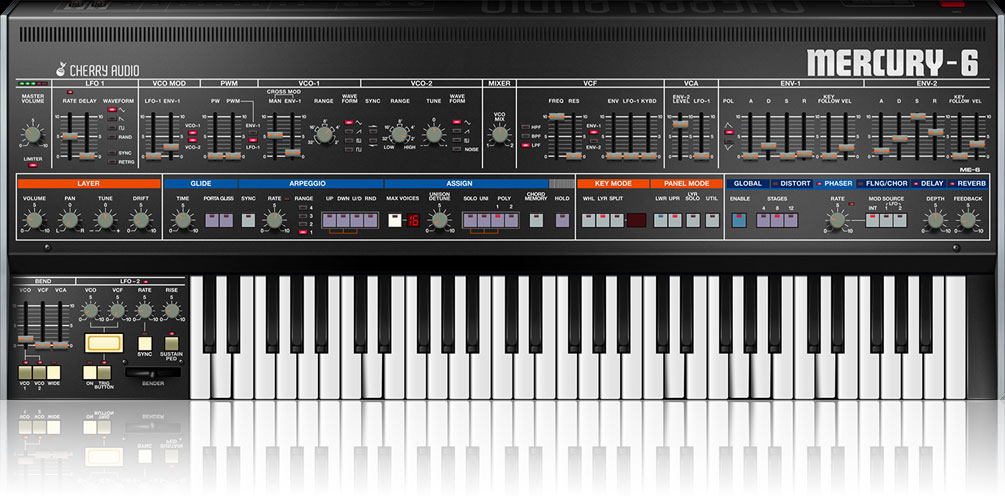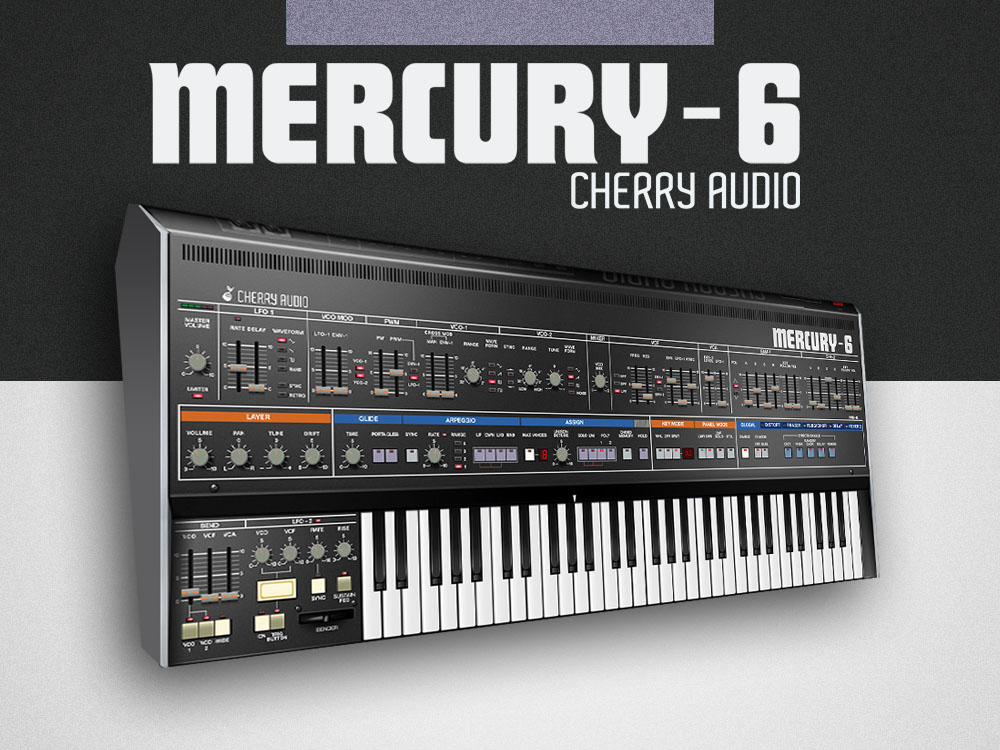You're currently on:
The Sleeper Has Awakened
Mercury-6 is a meticulous recreation of the Jupiter-6 analog polyphonic synthesizer, initially released in 1983. Sandwiched between the earlier Jupiter-4 and Jupiter-8 models in name only, the sophisticated Jupiter-6 has sometimes been considered a sleeper release. These days, it has persevered to become one of Roland's most notable and coveted classic synthesizers due to its distinctive dark and complex character. If you've long yearned to explore the Jupiter-6, you'll love Mercury-6!
The Year Everything Changed
Released in 1983 as a more affordable alternative to the flagship eight-voice Jupiter-8, the six-voice Jupiter-6 nevertheless staked out an essential position in the history of analog polysynths. Though similar in appearance and feature set, the Jupiter-6 sounded considerably different from the Jupiter-8. The Jupiter-6's versatile filter design lent a more aggressive sound than previous Jupiters, making it a natural for cutting-edge techno and electro styles.
The Jupiter-6 VCOs supported multiple simultaneous waveforms, and its two LFOs and oscillator cross mod capabilities provided extensive modulation possibilities. Its earthshaking solo and poly unison modes enabled massive lead and bass sounds, and it was one of the first synthesizers to include the then-new MIDI protocol. However, the cost-cutting in the Jupiter-6 design resulted in some disadvantages. Audio output was mono only, and it was limited to six-voice polyphony, hampering the potential of its split keyboard feature. And its timing was ill-fated with the release of Yamaha's revolutionary DX7 the same year. But in a testament to the Jupiter-6's staying power over the decades, its popularity grew in genres such as big beat, house, and techno. As a result, the original hardware is still in demand today.
Mercury-6: Twice As Nice at a Fraction of the Price
Cherry Audio's Mercury-6 captures all that is exceptional in this classic and boosts the extraordinary feature set and functionality for today's DAW production and workflow. We've added velocity sensitivity, improved the split mode, and added a layer mode capable of stacking two different sounds simultaneously with per-layer stereo panning, detuning, and sustain. A panel control lets users easily select and navigate between these layers and includes a utility function for exchanging settings between the lower and upper layers, or even between presets. And with polyphony extended to 16 notes, Mercury-6 won't easily run out of voices.
We've reproduced the arpeggiator, including the hidden Up/Down modes of the original, and augmented it by adding a Random mode and MIDI tempo sync. A chord memory mode enables multiple notes to be stored and played back with a single key. We've improved the functionality of the LFOs with a retrigger for LFO-1 and an always-on option for LFO-2, both syncable to MIDI tempo.
We've also introduced an integrated studio-quality effects panel with brilliant-sounding distortion, phaser, flanger/chorus, delay, and reverb. With additional touches such as per-layer drift control, over 500 expertly designed presets, and flexible MIDI mapping, Cherry Audio's Mercury-6 brings the authentic Jupiter-6 experience 40 years into the future.
Mercury-6 Features
Highly optimized,massive dual-layer voicing architecture with 16 polyphonic voices per layer. Keyboard split or stacked layer modes allow two simultaneously playable layers, with separate per-layer controls for all parameters, including effectsSystem Requirements
Mercury-6 is available in AU, VST, VST3, AAX, and standalone formats.
A free 30-day demo of Mercury-6 is available. This demo will play white noise periodically, but is otherwise unlimited.
macOS Requirements: macOS 10.13 or above. macOS 13 Ventura supported. 64-bit required. Native Apple M1 processor support, including Apple M1 Ultra. 3.4 GHz Quad-Core or M1 CPU with 8GB of RAM recommended.
Windows Requirements: Windows 7 or above (including Windows 11), 64-bit required. 3.4 GHz Quad-Core computer with 8GB of RAM recommended.
NOTE: Internet connection required for product activation.



























































